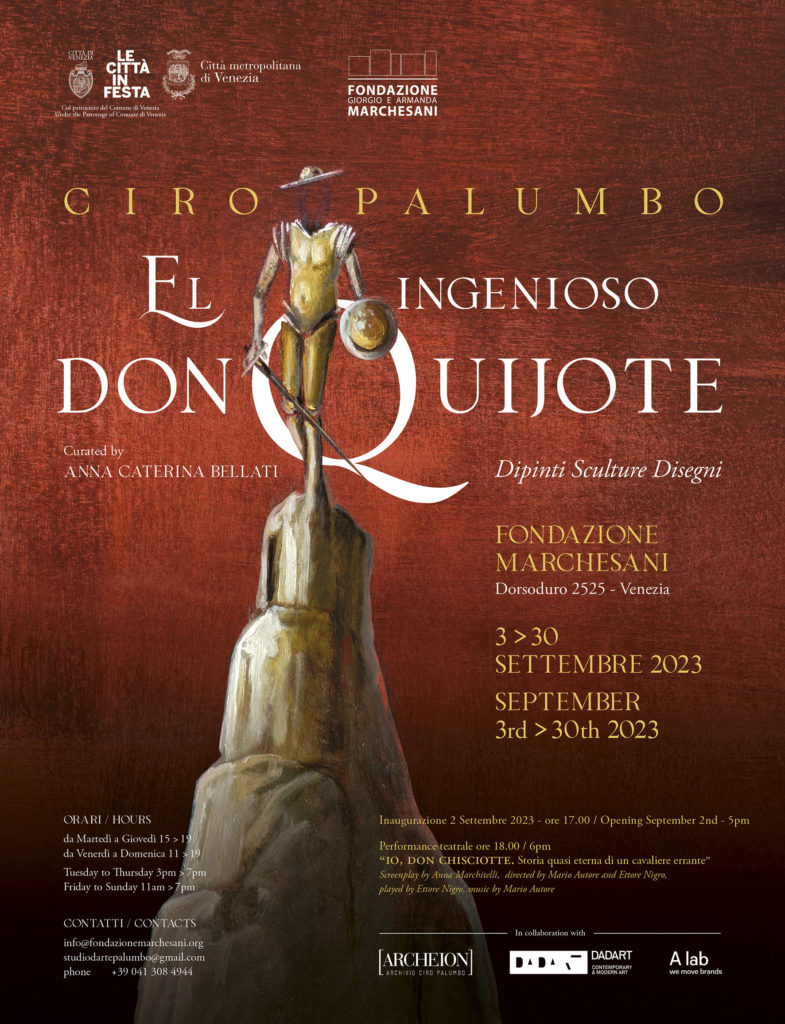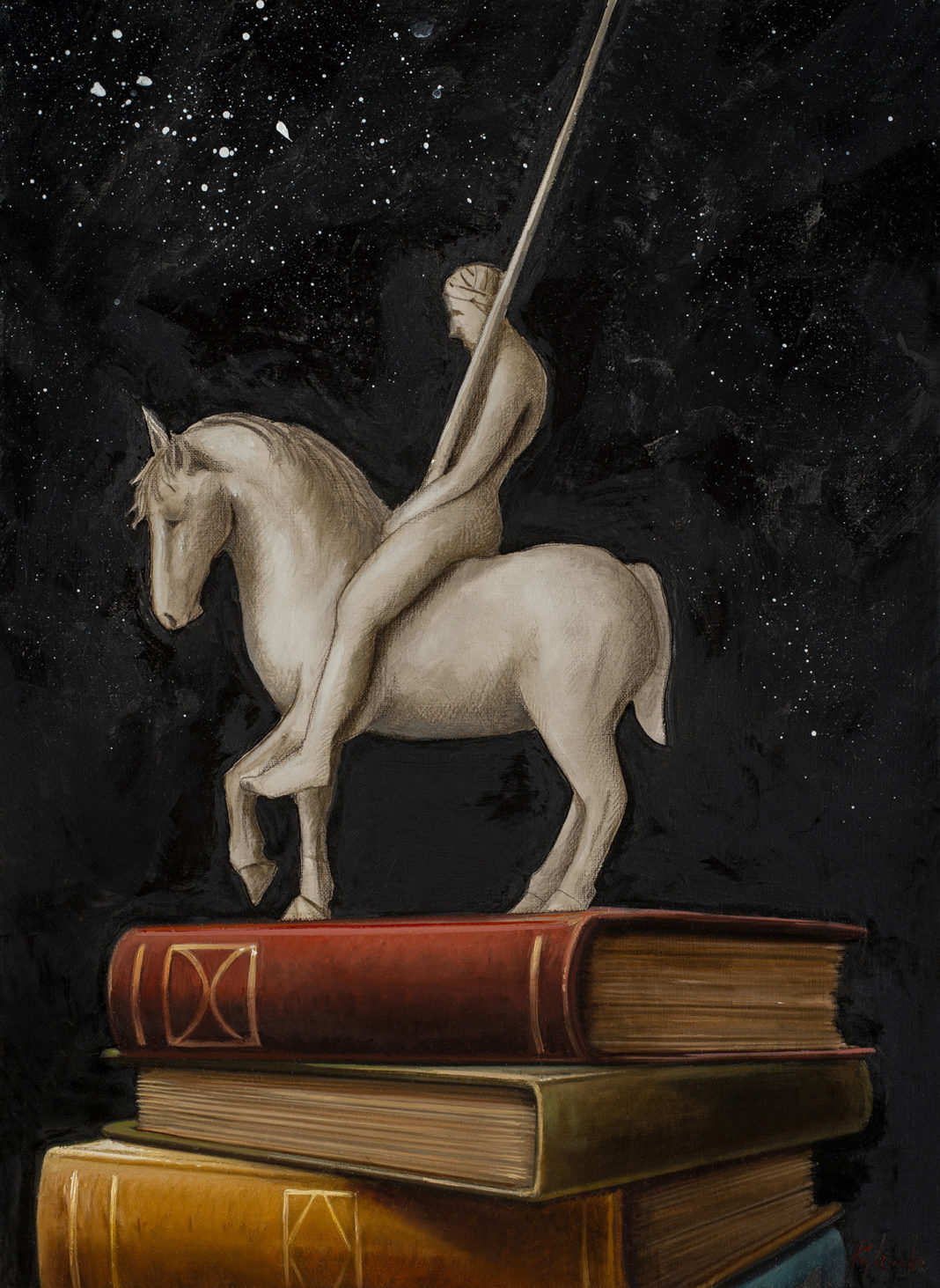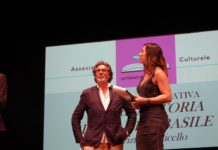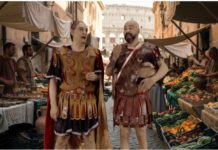Un po’ di Napoli a Venezia, attraverso Don Chischiotte. Con una mostra di Ciro Palumbo (che malgrado nome e cognome campani è nato a Zurigo nel 1964) e lo spettacolo teatrale scritto dalla giornalista e autrice napoletana Anna Marchitelli (classe 1982) interpretato da Ettore Nigro, con la regia di Mario Autore. Le due iniziative trovano linfa nel capolavoro di Miguel Cervantes e nella reinterpretazione del cavaliere errante più celebre della Storia.
Dal 3 al 30 settembre, negli spazi espositivi della Fondazione Giorgio e Armanda Marchesani, a Venezia, inserita nel circuito della Biennale di Venezia 2023, sarà allestita la mostra di Palumbo, El ingenioso Don Quijote, a cura di Anna Caterina Bellati (che ha realizzato il catalogo).
Don Chisciotte della Mancia è un’opera monumentale che attraversa la Storia con una sfera infinita di senso: Palumbo quando ha scelto di penetrarne le profondità di questo Mondo di cui, oltre al protagonista, fanno parte il fedele servitore Sancho Panza, l’amata Dulcinea e il cavallo Ronzinante.
L’artista ha mescolato gli archetipi che costellano la propria poetica con quelli del Don Chisciotte, in un percorso di narrazione visiva e di significati richiamando, su tutti, una visione cristica del cavaliere che, consapevole di sé, fa i conti con la follia, l’utopia, la vita e la morte.
Il corpus di opere – 46 lavori tra dipinti e carte e 4 sculture – rivela la volontà di confrontarsi con l’altro, capirne a fondo l’anima per diventare in certa misura “quel” cavaliere.
Lo spettacolo (che sarà presentato durante l’inaugurazione dell’esposizione venerdì 2 alle 17) nasce dal confronto serrato e intenso tra Marchitelli e Palumbo. L’artista firma anche la scena composta da quattro tele (160 cm x 200 cm) e oggetti di scena, creando un proseguimento, ideale e reale, con il percorso espositivo, mentre i costumi sono di Anna Zuccarini.
Il sogno donchisciottesco perde i contorni romanzeschi: è lo stesso personaggio, sulla soglia tra il vivere e il morire, a far cadere l’illusione e a svelare, in primis a Sancho Panza, che le etichette che gli ha affibbiato il “popolo dei savi e sani di mente”, ovvero “il folle”, “lo scemo che si è scimunito a causa dei libri e della donna amata”, o ancora “lo stolto che combatte contro i mulini a vento”, sono frutto di una (secolare e consapevole) messinscena da parte del protagonista.
Diventa, così, un (moderno) cristo processato e crocifisso per il suo amore verso l’umanità tutta e il suo spirito invita uomini singoli e soli a unirsi sulla scia da lui lasciata: perché un esercito di don Chisciotte fa più paura di un cavaliere solitario.
Per saperne di più
www.ciropalumbo.it
www.fondazionemarchesani.org
www.dadart.gallery
www.bellatieditore.com

Venice & Naples/ The wind of Don Quixote blows between the exhibition by Ciro Palumbo and the performance written by Anna Marchitelli. A metaphor of love for humanity
A bit of Naples in Venice through Don Chischiotte. With an exhibition by Ciro Palumbo (who, despite his Neapolitan name and surname, was born in Zurich in 1964) and a play by the Neapolitan journalist and writer Anna Marchitelli (born in 1982) starring Ettore Nigro and directed by Mario Autore. Both initiatives are inspired by Miguel Cervantes’ masterpiece and his reinterpretation of the most famous knight in history.
From September 3 to 30, Palumbo’s exhibition, El ingenioso Don Quijote, curated by Anna Caterina Bellati (who produced the catalog), will be on view in the exhibition spaces of the Fondazione Giorgio e Armanda Marchesani in Venice, part of the Venice Biennale 2023 circuit.
Don Quixote de la Mancha is a monumental work that traverses history with an infinite sphere of meaning: Palumbo, when he chose to penetrate the depths of this world, which, in addition to the protagonist, includes the faithful servant Sancho Panza, the beloved Dulcinea and the horse Rocinante.
The artist has mixed the archetypes that constellate his own poetics with those of Don Quixote, in a path of visual narrations and meanings that recall, above all, a Christlike vision of the knight who, self-consciously, comes to terms with madness, utopia, life and death.
The body of work-46 works, including paintings and works on paper, and 4 sculptures-reveals the will to confront the other, to deeply understand his soul in order to become, in a sense, “that” knight.
The show (which will be presented during the opening of the exhibition on Friday 2nd) was born from the close and intense confrontation between Marchitelli and Palumbo. The artist also signs the scene, composed of four canvases (160 cm x 200 cm) and props, creating an ideal and real continuation of the exhibition route, while the costumes are by Anna Zuccarini.
Don Quixote’s dream loses its fictional contours: it is the character himself, on the threshold between life and death, who drops the illusion and reveals, first and foremost to Sancho Panza, that the labels attached to him by the “people of the wise and the sane,” viz, “the madman,” “the fool who has gone astray because of books and the woman he loves,” or even “the fool who fights against windmills,” are the result of a (centuries-old and conscious) deception on the part of the protagonist.
In this way, he becomes a (modern) Christ, condemned and crucified because of his love for all humanity, and his spirit invites single and lonely people to unite in the wake he has left behind: for an army of Don Quixote is scarier than a lone knight.










